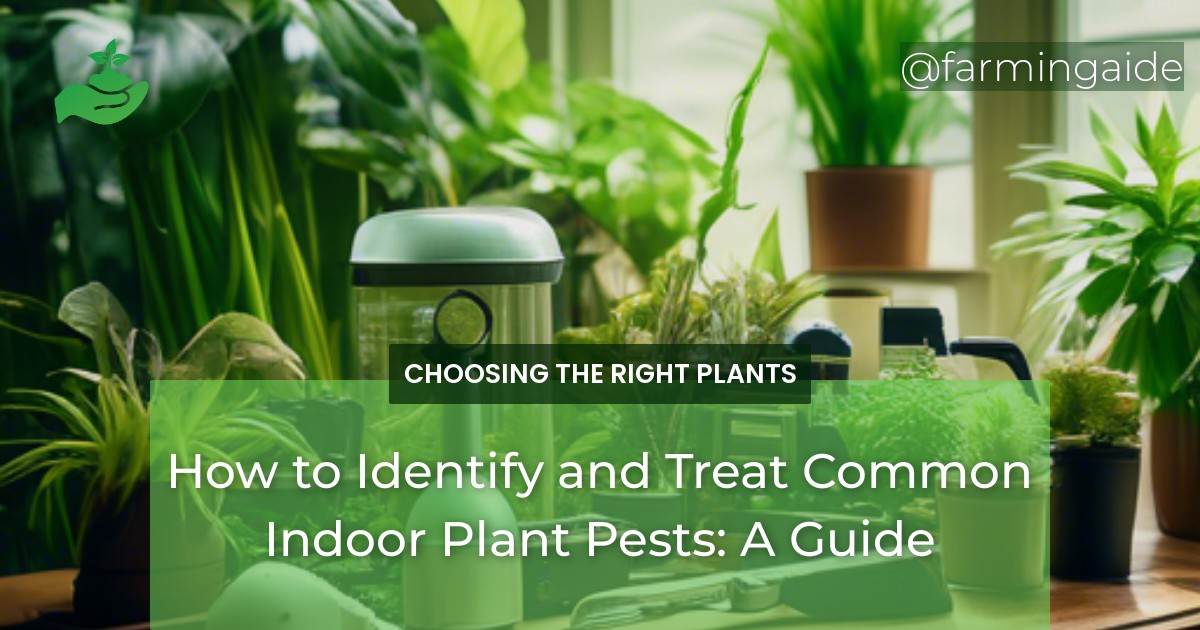As an indoor gardener, there’s nothing more frustrating than noticing your beloved houseplants are under attack by pesky pests. Whether you’re a seasoned green thumb or a beginner, identifying and treating common indoor plant pests is crucial to maintaining a healthy and thriving indoor garden. In this comprehensive guide, we’ll delve into the world of indoor plant pests, exploring the most common types, signs of infestation, and effective treatment and control methods. By the end of this article, you’ll be equipped with the knowledge to identify and treat indoor plant pests, ensuring your plants receive the care they need to flourish.
Key Takeaways
- Identifying common indoor plant pests is crucial for effective treatment and control.
- Visual inspection and monitoring are essential for early detection.
- Integrated pest management strategies offer a holistic approach to pest control.
- Good housekeeping and sanitation practices can prevent future infestations.
- Isolating new plants and quarantining can prevent the spread of pests.
Understanding Indoor Plant Pests
Indoor plant pests can be detrimental to the health and well-being of your plants. These unwanted visitors can cause significant damage, ranging from cosmetic damage to complete plant destruction. Understanding the types of pests that can infest your indoor plants is the first step in identifying and treating infestations.
Common Types of Indoor Plant Pests
Some of the most common indoor plant pests include:
- Spider mites
- Mealybugs
- Scale
- Aphids
- Whiteflies
- Thrips
Signs and Symptoms of Pest Infestation
Recognizing the signs and symptoms of pest infestation is crucial for early detection and treatment. Look out for:
- Unexplained yellowing or dropping of leaves
- Visible pests or eggs on the plant
- Honeydew or sticky substances on the plant
- Webs or eggs on the plant
- Unusual plant growth or distortion
Identifying Indoor Plant Pests
Identifying indoor plant pests requires a combination of visual inspection and monitoring. Here are some effective methods for identifying pests:
ALSO READ
Visual Inspection and Monitoring
Regularly inspect your plants for signs of pest infestation, paying attention to:
- Leaf undersides and stems
- Soil and potting mix
- Plant growth and development
Using Traps and Baits
Traps and baits can be an effective way to monitor for pests and identify infestations. Consider using:
- Sticky traps to capture flying pests
- Bait stations to attract pests
- Monitoring cards to track pest activity
Treatment and Control Methods
Once you’ve identified the pest, it’s essential to choose an effective treatment and control method. Here are some options:
ALSO READ
Organic and Chemical Control Options
Consider using a combination of organic and chemical control methods, such as:
- Insecticidal soap
- Horticultural oil
- Pesticidal soap
- Systemic insecticides
Integrated Pest Management Strategies
Integrated pest management (IPM) strategies offer a holistic approach to pest control, combining:
- Cultural controls (e.g., pruning, watering)
- Biological controls (e.g., introducing beneficial insects)
- Chemical controls (e.g., insecticides)
- Physical controls (e.g., traps, barriers)
Preventing Future Infestations
Preventing future infestations requires a combination of good housekeeping and sanitation practices, along with quarantining new plants and isolating infested plants.
Good Housekeeping and Sanitation
Maintain good housekeeping and sanitation practices by:
- Regularly cleaning pots and planters
- Disinfecting pruning tools
- Removing weeds and debris
Isolating New Plants and Quarantining
Isolating new plants and quarantining infested plants can help prevent the spread of pests. Consider:
- Quarantining new plants for 2-4 weeks
- Isolating infested plants to prevent further spread
- Monitoring isolated plants for signs of pest activity
Can Indoor Plant Pests Affect the Propagation Process?
When dealing with indoor plant pests, it’s crucial to consider their impact on the propagation process. Implementing effective tips for propagating indoor plants can help prevent pest infestations from hindering the growth and development of new plants. Taking proactive measures can ensure successful propagation and healthy plant growth.
Can Growing Indoor Herbs Attract More Pests to My Home?
Yes, growing herbs indoors can attract more pests to your home. Common indoor pests like aphids, spider mites, and whiteflies can infest indoor herb plants. To prevent pest infestations, make sure to keep your indoor herb garden clean, well-ventilated, and free from overwatering.
Conclusion and Summary of Indoor Plant Pest Control
In conclusion, identifying and treating indoor plant pests requires a combination of visual inspection, monitoring, and effective treatment and control methods. By understanding the types of pests, signs of infestation, and effective treatment options, you can ensure your indoor plants receive the care they need to thrive. Remember to implement good housekeeping and sanitation practices, isolate new plants, and quarantine infested plants to prevent future infestations. With the right knowledge and strategies, you can maintain a pest-free indoor garden and enjoy the many benefits of indoor gardening.


